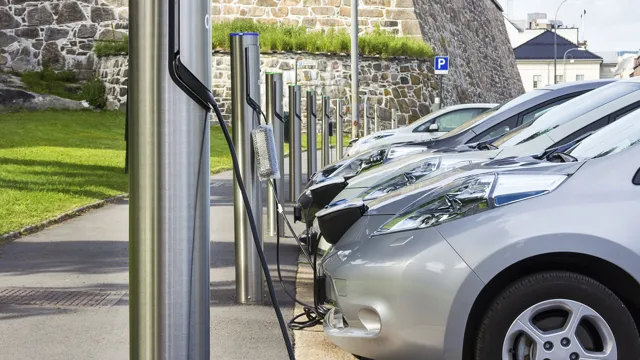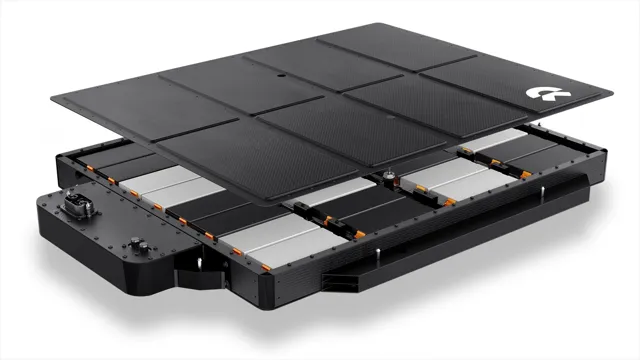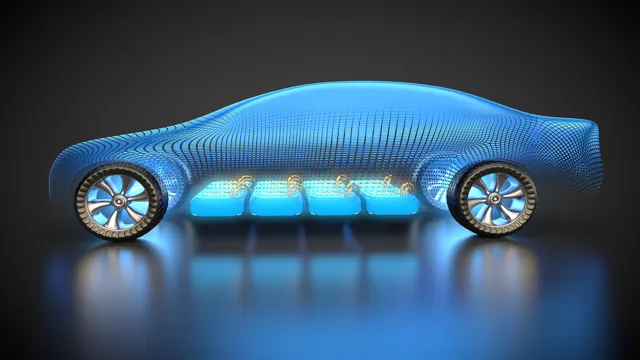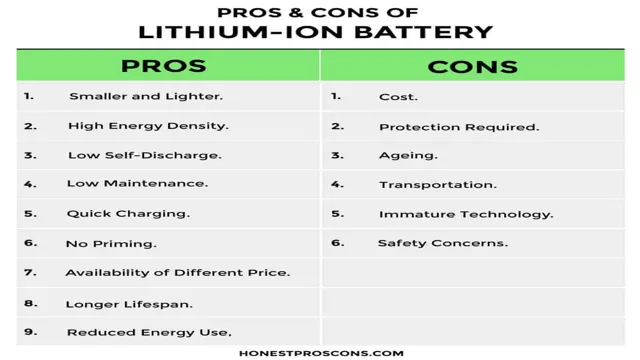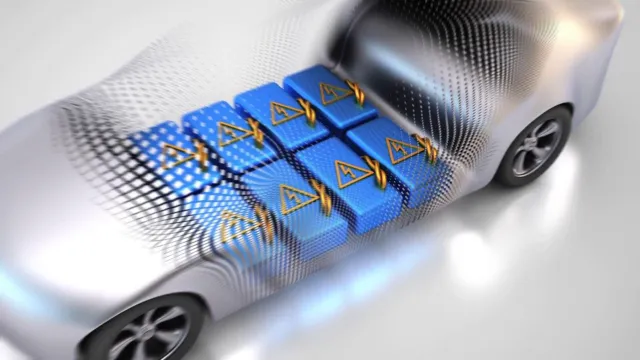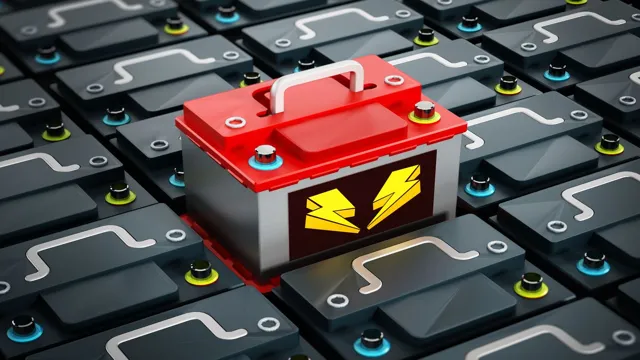Charging Ahead: Optimal Electric Car Battery Charging Strategies for Longer Drives
Electric cars are gaining popularity among car enthusiasts these days, thanks to their numerous benefits, including fuel savings, low maintenance costs, and a more eco-friendly driving experience. However, many people still have concerns about how to charge the car battery effectively. The good news is that there are many electric car battery charging strategies available, and this blog post will explore the most popular ones.
Whether you plan to charge your electric car at home, at work, or on the road, there are several options for you. So, sit back, relax, and discover the best strategies for charging your electric car battery.
Types of Charging
When it comes to electric car battery charging strategies, there are a few different types to consider. The three main types of charging are Level 1, Level 2, and DC Fast Charging. Level 1 charging uses a standard 120-volt outlet and is the slowest method, providing up to 4 miles of range per hour of charging.
Level 2 charging, on the other hand, uses a 240-volt outlet and can provide up to 25 miles of range per hour. Lastly, DC Fast Charging is the quickest method and can offer up to 300 miles of range in just 30 minutes of charging. It’s important to note that different types of electric cars may have different charging capabilities and not all charging stations offer all three types of charging.
Understanding these different charging strategies can help you plan your electric car charging routine and ensure that you have enough range to reach your desired destination.
AC Charging
AC charging is an important aspect of modern electric vehicles, and there are different types of charging available. The most common type of AC charging is Level 1 charging, which uses a standard 120-volt household outlet. This method of charging is slow and can take up to 20 hours to fully charge an electric vehicle.
Level 2 charging, on the other hand, uses a 240-volt outlet and can charge an EV in 4-6 hours. This is a popular option for charging stations and is more convenient for those who need a quicker charge than Level 1 provides. Furthermore, AC fast charging uses a similar method to Level 2 charging but can charge an EV in just 30-60 minutes.
This is an excellent option for those who need to charge their car quickly but also need to get back on the road. It’s also important to note that different EVs have different charging capabilities, so it’s important to check the specifications before selecting a charging method. Overall, AC charging is a crucial part of EV ownership and understanding the different types available can help EV owners make informed decisions about their charging needs.
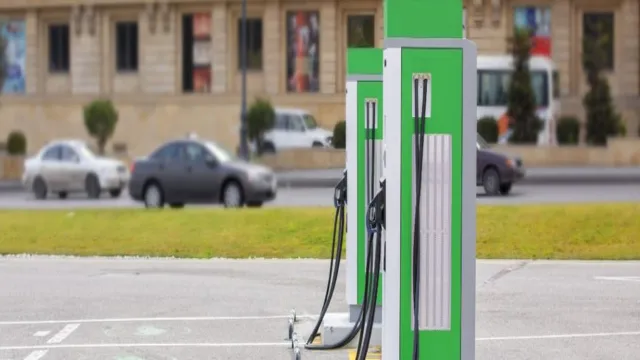
DC Fast Charging
When it comes to electric vehicles, charging is a crucial element that needs to be considered. Unlike traditional cars, EVs are powered by electricity and require frequent recharging to function properly. DC fast charging is one of the most convenient and efficient ways to charge your electric car.
There are three types of DC fast charging including CHAdeMO, CCS, and Tesla Supercharger. Each type has its own unique characteristics and limitations, so it’s important to choose the right one for your EV. CHAdeMO is a Japanese fast charging standard that is used by Nissan and Mitsubishi.
CCS, on the other hand, is a European standard that is used by many automakers including BMW and Volkswagen. Lastly, Tesla’s Supercharger network is designed specifically for Tesla vehicles and allows for extremely fast charging. While these three types of DC fast charging may differ in terms of their compatibility, they all offer fast and efficient charging for electric vehicles.
Factors to Consider for Efficient Charging
When it comes to electric car battery charging strategies, there are several factors to consider that can affect the efficiency of the charging process. One of the most important things to keep in mind is the rate at which you charge your vehicle. While fast charging may seem like the best option, it can actually put more strain on your battery and reduce its overall lifespan.
On the other hand, slower, more consistent charging can help to preserve your battery’s health and ensure that it lasts for as long as possible. Additionally, it’s important to consider the type of charger you’re using and whether it’s compatible with your specific vehicle model. Some chargers may be able to deliver more power than others, which can impact the speed and efficiency of your charging process.
By taking these factors into account and developing a smart charging strategy, you can ensure that your electric vehicle is always ready to hit the road when you are.
Battery Capacity and Range
Battery capacity is a crucial factor when it comes to electric vehicles. The size of a battery determines the maximum range a vehicle can travel, but that’s not the only concern. Charging time and battery longevity also rely on the capacity.
A larger capacity may provide a longer driving range but also requires more time to charge. Additionally, frequent fast charging can degrade the battery’s lifespan, reducing its effective capacity. It’s important to consider your daily driving needs and charging infrastructure when selecting a battery capacity.
A smaller battery may be sufficient for short commutes, while a larger battery may be necessary for longer trips. However, be sure to balance the battery capacity with your charging lifestyle and overall efficiency to maximize the vehicle’s potential.
Temperature and Climate
When it comes to charging, the temperature and climate are important factors to consider for efficient performance. Charging at extreme temperatures, whether hot or cold, can affect the charging speed and battery life of an electric vehicle. High temperatures can cause the battery to degrade faster and lead to a shorter overall lifespan, while very cold temperatures can slow down charging times.
To get the most out of your charging experience, it’s recommended to charge your vehicle in moderate temperatures around 20-25°C. If you need to charge in extremely hot or cold conditions, it’s important to pay attention to the charging speed and monitor the battery’s temperature to prevent any damage. By taking the temperature and climate into account, you can ensure that your electric vehicle is charged efficiently and ready to go whenever you need it.
Charging Infrastructure Availability
When it comes to electric vehicles, the availability of charging infrastructure is a crucial factor in their efficiency. The availability of charging stations can determine how far you can travel, and how long it takes to charge up your vehicle. But what factors need to be considered when it comes to efficient charging? Firstly, the location of charging stations is important.
Ideally, charging stations should be placed where they are easily accessible to drivers, whether it be on highways, in cities, or in residential areas. Secondly, the speed of charging is a key consideration. The faster the charging time, the more efficient the charging process will be.
Thirdly, the type of charging infrastructure available is important. There are different types of chargers such as Level 1, Level 2 and DC Fast Charging with different times for charging. Finally, the availability of payment options is important.
Charging should be easy to access and payment should be easy to process. keyword: efficient charging.
Best Practices for Electric Car Charging
When it comes to electric car battery charging strategies, there are several best practices that can help you optimize your experience. Firstly, it’s essential to find the right charging station for your vehicle. Whether you’re at home or out and about, make sure you’re using a charging station that is compatible with your car’s battery and has a high enough charging speed to meet your needs.
Secondly, consider the timing of your charges. Charging during off-peak hours can help you save money and reduce your environmental impact. Thirdly, try to avoid letting your battery drain completely before recharging it.
This can help extend the overall life of your battery. Additionally, it’s wise to regularly check your charging equipment for any signs of wear or damage and to always follow proper safety guidelines when handling electricity. By following these best practices, you can ensure that your electric car is always fully charged and ready to go whenever you need it.
Avoid Frequent Charging to 100%
When it comes to electric car charging, one of the best practices to follow is to avoid charging your battery to 100% too frequently. This is because, just like any other battery, overcharging can have a negative impact on the overall health and lifespan of your electric car battery. Instead, aim to charge your battery up to around 80-90% on a regular basis, unless you know you’ll need the extra range for a longer trip.
Additionally, it’s important to avoid letting your car battery run too low, as this can also cause damage over time. By finding that balance between charging regularly and avoiding overcharging or undercharging, you can help extend the life of your electric car battery and ensure that your vehicle runs smoothly for years to come. So, next time you plug in your car for a charge, remember to consider these best practices to keep your battery in top shape.
Charge to 80% for Regular Use
As electric cars become more popular, it is important to know the best practices for charging them. One of the most important things to remember is to aim to charge your car’s battery to 80% for regular use. This is because charging your battery to 100% on a regular basis can cause strain on the battery and shorten its lifespan.
Additionally, charging your battery to 100% may not provide any extra range, as the last 20% of the battery’s capacity charges at a slower rate. Therefore, it is better for the battery’s health and your wallet to charge your electric car to 80% for daily use and only charge to 100% when necessary for longer trips. By following this recommendation, you can ensure that your electric car’s battery lasts longer and performs at its best.
So, the next time you plug in your electric car, remember to aim for 80% for regular use and save 100% charging for when you truly need it.
Keep Battery at Moderate Temperatures
One of the best practices for electric car charging is to keep the battery at moderate temperatures. It’s important to note that extreme temperatures can significantly affect the performance and lifespan of your electric car’s battery. For instance, exposing the battery to high temperatures for an extended period can lead to shortening of its lifespan, while exposing it to very low temperatures can cause reduced performance and permanently decreased capacity.
To avoid such situations, it’s crucial to keep your car’s battery at a moderate temperature, especially when charging. This can be achieved by avoiding charging under direct sunlight or in extremely cold weather. Furthermore, make sure to keep an eye on the battery’s temperature gauge and adjust your charging behaviours accordingly.
With these best practices, you can ensure that your electric car battery lasts longer and performs optimally.
Smart Charging Technologies
Electric car battery charging strategies have evolved in recent years with the development of smart charging technologies. These technologies have enabled electric vehicles to charge efficiently and quickly by utilizing renewable energy sources such as solar power and wind power. One of the most popular charging strategies is networked charging, where charging stations are connected to a central system.
This strategy allows for more efficient use of resources and reduces the chances of grid overload. Another strategy is dynamic charging, which adjusts the rate of charging based on the battery’s temperature and state of charge. This not only extends the battery’s life but also optimizes charging time and reduces energy waste.
Overall, these smart charging technologies play a crucial role in making electric cars more practical and convenient for everyday use, ensuring a cleaner and more sustainable future.
Vehicle-to-Grid (V2G) Charging
Vehicle-to-Grid (V2G) charging is a technological breakthrough in the world of electric vehicles. With V2G, electric vehicles can not only consume energy but also provide energy back to the electric grid, potentially opening up a new revenue stream for EV owners. Through smart charging technologies, V2G systems can communicate with the electric grid to determine the best time to charge a vehicle’s battery and when to discharge it back to the grid.
This optimized approach not only benefits the electric vehicle owner by reducing charging costs but also helps the grid to operate more efficiently during peak hours of energy demand. With V2G, it’s possible to turn electric vehicles into a mobile battery storage system, providing a crucial resource to the grid during times of high energy demand or emergencies. The future of smart charging technologies and V2G is bright, offering a cost-effective and sustainable solution for both EV owners and the electric grid.
Off-Peak Charging
Off-peak charging is becoming a popular trend among electric vehicle (EV) owners. Instead of charging their vehicles during peak hours when the demand for electricity is high, they are charging at off-peak times when the demand is lower. This not only saves them money but also helps to reduce the strain on the electrical grid during the day.
Smart charging technologies, such as timers, allow drivers to schedule their charging during off-peak hours automatically. Some utility companies even offer special rates or incentives for off-peak charging, making it even more enticing for EV owners. It’s a win-win situation that benefits both the consumer and the environment.
So, if you’re an EV owner, consider switching to off-peak charging to save money and reduce your carbon footprint.
Conclusion
In the world of electric cars, the battery is the heart and soul of the vehicle. And just like our own hearts, it needs a carefully crafted charging strategy to keep it healthy and efficient. From fast charging to smart charging, there are a variety of options available to users, each with their own benefits and drawbacks.
Ultimately, the best strategy is the one that fits your lifestyle and meets your needs. So whether you’re a road-tripper or a city dweller, a frequent user or an occasional driver, there’s a perfect charging strategy out there waiting for you. With a little research and planning, you’ll be zipping around town in your electric car in no time, knowing you’ve made a smart, efficient, and eco-friendly choice.
“
FAQs
What are the different types of electric car battery charging strategies?
There are three main types of electric car battery charging strategies: Level 1 charging, Level 2 charging, and DC fast charging.
How long does it take to fully charge an electric car battery using Level 1 charging?
Level 1 charging uses a standard household outlet and can take up to 22 hours to fully charge an electric car battery.
What is the maximum charging speed of Level 2 charging?
The maximum charging speed of Level 2 charging is around 60 miles of range per hour.
What are the benefits of using DC fast charging for electric car battery charging?
DC fast charging can charge an electric car battery up to 80% in as little as 30 minutes, making it a great option for long distance travel.

